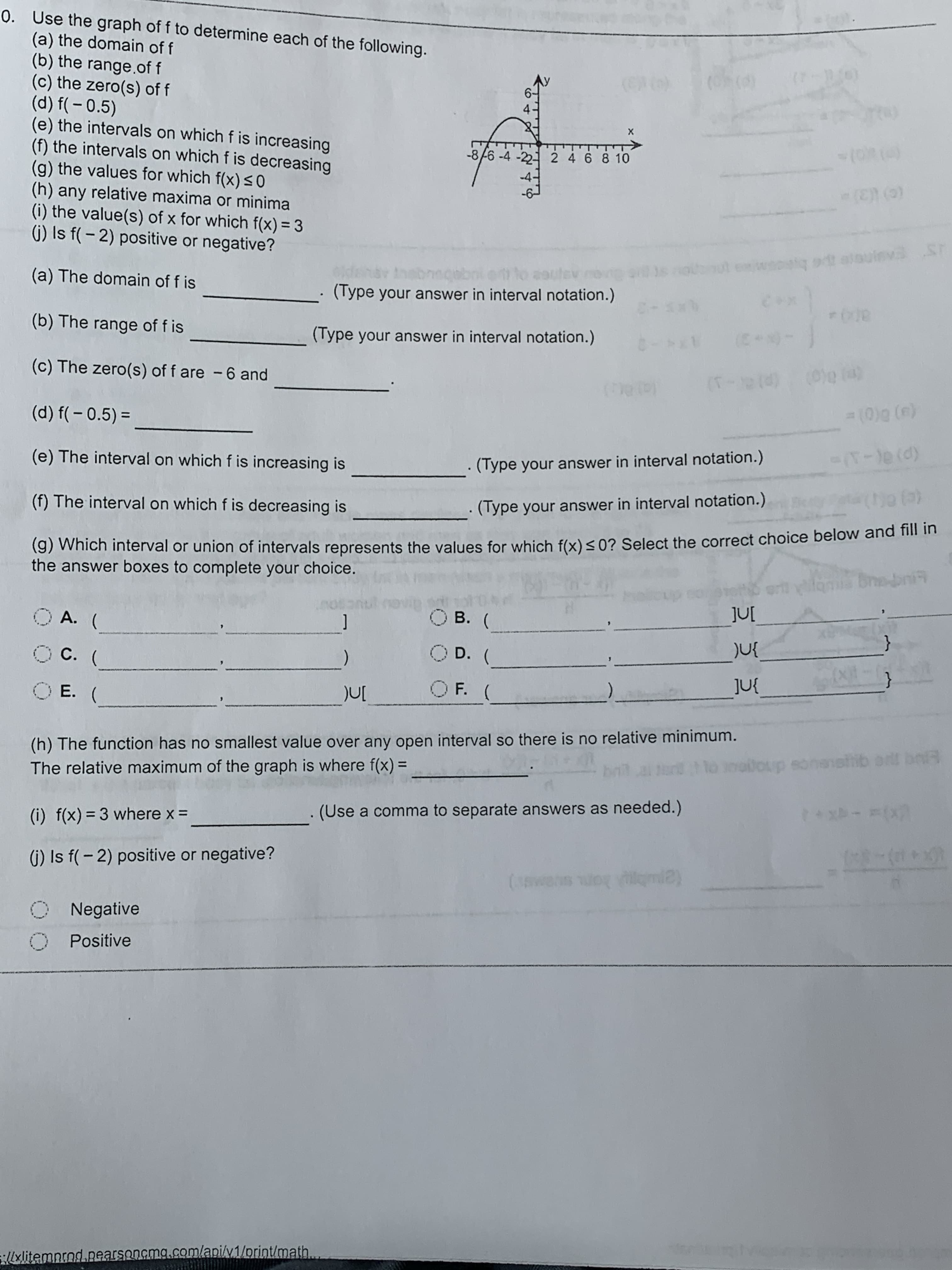Use the graph of f to determine each of the following. (a) the domain of f (b) the range.of f (c) the zero(s) of f (d) f(-0.5) (e) the intervals on which f is increasing (f) the intervals on which f is decreasing (g) the values for which f(x) s0 (h) any relative maxima or minima (i) the value(s) of x for which f(x) 3 (j) Is f(-2) positive or negative? 0. D/ 4 X (00) -8/6-4-221 2 4 68 10 -(E () o1 we dt atauieva ST u ut e (a) The domain of f is (Type your answer in interval notation.) C= c.x (b) The range of f is (Type your answer in interval notation.) (4)1 0- sx1 (c) The zero(s) of f are 6 and (Tl8) (0)e () (ap) (Co (d) f(-0.5) = =(0)a () (e) The interval on which f is increasing is -(T-led) (Type your answer in interval notation.) (f) The interval on which f is decreasing is (Type your answer in interval notation.) (g) Which interval or union of intervals represents the values for which f(x) <0? Select the correct choice below and fill in the answer boxes to complete your choice. Bnmbn 0A. ( JUL OB. ( OD. ( OC. ( ) JU{ OE. ( F. ( )UI (h) The function has no smallest value over any open interval so there is no relative minimum. The relative maximum of the graph is where f(x) = ! bo8 matop sonen +xh- m(x (Use a comma to separate answers as needed.) (i) f(x) 3 where x= .EHNE (i) Is f(-2) positive or negative? m2 (w Negative 0 Positive llxlitemnrnd.pearsoncma.com/ani/v1/orint/math
Unitary Method
The word “unitary” comes from the word “unit”, which means a single and complete entity. In this method, we find the value of a unit product from the given number of products, and then we solve for the other number of products.
Speed, Time, and Distance
Imagine you and 3 of your friends are planning to go to the playground at 6 in the evening. Your house is one mile away from the playground and one of your friends named Jim must start at 5 pm to reach the playground by walk. The other two friends are 3 miles away.
Profit and Loss
The amount earned or lost on the sale of one or more items is referred to as the profit or loss on that item.
Units and Measurements
Measurements and comparisons are the foundation of science and engineering. We, therefore, need rules that tell us how things are measured and compared. For these measurements and comparisons, we perform certain experiments, and we will need the experiments to set up the devices.
Can someone help me solve this problem?

Trending now
This is a popular solution!
Step by step
Solved in 3 steps with 3 images








